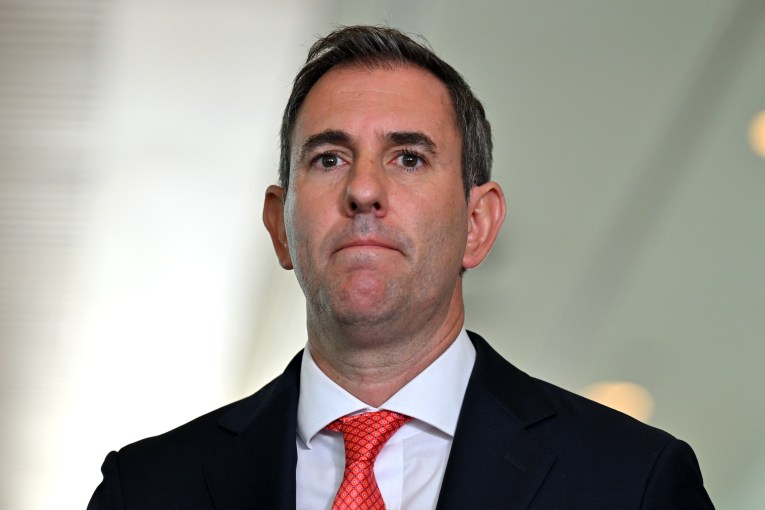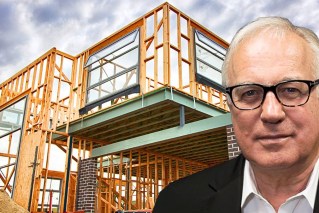Michael Pascoe: ‘I’ve found the missing housing – half a century’s worth’


Housing policy failure is plain to see, writes Michael Pascoe. Photo: TND/Getty
You know all the handwringing about the housing crisis, the claims that “it’s complicated” and that “there’s no silver bullet” and the broad resignation of not having a solution?
Well, I’ve found the missing housing and know what the real solution is – if any government cares.
We’ve arrived at the present housing disaster rather like the Hemingway character explaining how he went bankrupt: “Two ways. Gradually and then suddenly.”
The “gradual” part of the crisis started half a century ago when governments began to withdraw from providing public housing.
That gradual withdrawal turned into a speedy exit since the turn of the century, finally disastrously exploding under the cover of COVID as the nation found itself with a critical shortage of accommodation and an unsustainable model of housing prices forever dramatically rising.
Regular readers will know I’m fond of Productivity Commission (PC) graphs that show the effective stagnation of public and community housing over the past decade as our population has rapidly risen.
But the PC graphs and figures understate the extent of the public policy crime committed by governments of all levels and colours.
The entrails of a graph tucked away near the end of a lengthy Sydney Morning Herald article on the rental crisis contain the broader extent of the failure that’s now come home to roost.
Table 38 of the ABS building activity stats track the building of private and public houses and units/townhouses from 1956. In that year, 22 per cent of new housing was public – 16,111 out of 73,277 dwellings.
As recently as 1971, public housing made up 13.2 per cent of new dwellings – 18,768 out of 142,439.
But in 2019, to use the last year free of COVID distortion, just 1.1 per cent of new dwellings were public housing – 2,283 out of 200,843.
Note the collapse both in absolute numbers as well as the proportion.
Aside from a brief blip in the Rudd/Gillard years, the ABS table translates into 20 years of flatlining in the SMH graph.
That’s where the missing housing is – the necessary public housing not built, the public housing that would have moderated housing and rent inflation, potentially keeping all housing more affordable.
‘The market’ falls short
The efforts of all governments (and they are on-going efforts) to outsource public housing to community housing groups in recent years has barely kept pace with governments selling off their housing stock.
The bigger outsourcing issue of leaving the provision of shelter to “the market” – as the extremely powerful developer lobby and neoliberal ideologues have wanted – has demonstrably failed.
If “the market” had not failed, the Federal Government wouldn’t need to be spending more than $5 billion this year on Commonwealth Rental Assistance (CRA) – effectively subsidising private landlords, often for substandard accommodation, and still leaving a large proportion of CRA recipients in rental stress.
If “the market” could adequately deal with our shelter needs, we wouldn’t be relying on charities to house the homeless, have families sleeping in cars and more than one generation facing the likelihood of never having the security of their own permanent residence.
It is galling to constantly see the usual suspects regurgitating the usual excuses and Band-Aids for the fundamental problem of our governments abandoning their public housing responsibilities.
The housing industry in general and self-serving developers in particular love to blame “red tape”, local government planning and NIMBYs.
Governments, the RBA and the various housing bodies tend to nod along with them.
Dr Cameron Murray has comprehensively demonstrated it is not zoning red tape holding back the necessary increase in supply – it is “the market” wanting to maintain high and rising prices.
It has suited governments to play along with the real estate game, providing policies assisting home owners to think their purchase of shelter will make them rich.
The scheme has worked for decades, housing prices keeping up with the stock market. Rather than be a recommendation for real estate speculation though, that should be a warning of failure as it is not sustainable.
There is a reason to expect the overall value of the stock market to rise nicely over time. Collectively, that market represents companies that make profits, pay some of those profits in dividends and retain the rest to invest in further growth and greater profits.

Public and community housing is continuing to fall behind private landlord funding.
Your block of residential land (where the housing value is) doesn’t grow itself – it only appreciates through restricted supply of desirable accommodation.
Dr Murray has reasonably advised real estate should be treated as a monopoly. The only way to get land is to buy it from the monopoly – existing owners – and none of those owners has an interest in increasing supply to lower profits.
Which is where a rapid increase in public housing should come in.
Governments don’t need to make a profit on using their land for public housing – it has just been part of the problem that various state governments have preferred to operate like private developers in recent decades.
A large and healthy supply of public housing would call time on the monopoly imposing its monopoly rents.
But that is not happening
While the Commonwealth and state governments are all making more noise and greater promises, they all remain well short of the commitment and honesty required.
An example is Federal Labor’s $10 billion Housing Australia Future Fund (HAFF) election gimmick that promised to subsidise 30,000 community housing dwellings with the $500 million a year the fund was expected to earn.
What’s not appreciated is that the HAFF, as designed, would need to keep subsidising those 30,000 units – it doesn’t keep growing supply.
In any event, the whole not-for-profit community housing structure is reliant on charities to run them. That’s not a model that promises the scale required to solve our crisis and tame housing inflation.
They can be very fine charitable works – relying, for example, on church land – but it’s a play on the edge of the problem.
Similarly, there are massive holes in the NSW government’s announced policy of increased floor space for developments that include 15 per cent “affordable” housing.
It might sound good, but it still leaves the decision about the quantity of supply to developers who want higher prices.
Temporary reprieve
More immediately, unless existing NSW policy is changed, the affordable housing would only have to be available for a limited period and then it is back to “the market”.
The NSW chapter of the Australian Institute of Architects (AIA) neatly torpedoed the policy, explaining what was needed to fix it – if anyone cares.
The AIA also recommended date limits on development approvals to combat land banking that does more to limit supply than council red tape.
Dr Murray’s research points to the problem having earlier roots than development approvals. The land banking starts from the zoning decisions – the development approvals are further along the process.
The AIA to a degree falls into the same trap as just about every other well-meaning body that ignores the fundamental problem of a dysfunctional market requiring hefty direct government involvement to make honest, not just bitsy, policies fluffing around the fringes with photo ops.
There’s half a century of neglect and abandonment to catch up on.








